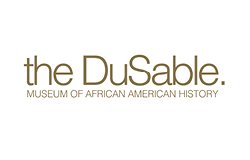
Results 1 to 9 of 9
Eugene Feldman papers
Eugene Pieter Romayn Feldman (1915-1987) was one of the founders of the DuSable Museum of African American History and fulfilled a number of roles in his 26 years at the museum, including Director of Research and Publications, Public Relations Officer, and Chief Archivist. The Eugene Feldman papers span from 1942-2002 with the bulk of material from 1969-1986. The papers provide
Lucy Montgomery papers
Lucy Montgomery (1911-1990) was an activist and philanthropist who supported civil rights and anti-war movements, the arts, and other liberal causes. During the 1960s, Montgomery’s personal financial support helped sustain the Student Nonviolent Coordinating Committee (SNCC), the Southern Christian Leadership Council (SCLC), the Mississippi Freedom Democratic Party, and The Black Panther Party. The Lucy Montgomery papers spans from 1901-1988 with
Frank Marshall Davis Collection
Frank Marshall Davis (1905-1987) was a prominent poet and journalist who lived in Chicago, Kansas, and Atlanta during the 1930s and 1940s before moving to Hawaii in 1948. Author of three major volumes of poetry, Black Man’s Verse (1935), I Am the American Negro (1937), and 47th Street (1948), Davis was also an active journalist in Chicago and Atlanta; he
Metz T.P. Lochard papers
The Metz T.P. Lochard papers span from 1926-1984, with the bulk of material from 1960-1980. Correspondence, drafts of editorials, newspaper clippings, and copies of other publications make up the majority of the papers. The papers reflect Lochard's time as editor-in-chief of The Chicago Defender, a prominent African-American newspaper. Metz T.P. Lochard (1896-1984) studied at the Sorbonne at the University of
Lorraine Passovoy papers
Lorraine Passovoy (1919-1990) was an author and researcher whose work focused on Jean Baptiste Point DuSable, the founder of Chicago. The Lorraine Passovoy papers spans from 1963-1989, with the bulk of material from 1974-1984. The papers reflect Passovoy’s extensive research and writing about the life of Jean Baptiste Point DuSable. Her drafts, manuscripts, and collected research material make up the
Eugene Winslow papers
Eugene Winslow was born on Nov. 17, 1919. He attended Froebel High School in Gary, Indiana and received a B.A. degree from Dillard University in New Orleans in 1943. Winslow graduated from the TAAF School in Tuskegee, Alabama during World War II attaining the rank of 2nd Lieutenant. He later served in the U.S. Air Force Reserve attaining the rank
Joseph W. Rollins, Sr. and Charlemae Rollins Collection
Charlemae Hill Rollins and Joseph Walter Rollins, Sr. were a prominent couple in Chicago's African American community from the 1920s through the 1970s. While Charlemae Rollins is more well-known nationally, Joseph Rollins held a high civic profile through his veterans' activities, and he was frequently noted in society columns in Jet and the Chicago Defender. Charlemae Hill Rollins, librarian, educator,
Virginia Julien papers
Virginia Wilson Julien (1916-2007) was a Chicago Public School teacher and Jean Baptiste Pointe DuSable scholar. Her research and activism regarding DuSable, the founder of Chicago, helped reestablish his place in Chicago and American history. The papers primarily relate to DuSable and include extensive historical research and original writings by Julien. The papers also provide insight into the efforts of
Charles Dawson papers
Charles Clarence Dawson (1889-1981) was a commercial artist best known for his illustrated advertisements of beauty schools and cosmetic products during the 1920s and 1930s. The Charles Dawson papers spans from 1912-1980, and includes original artwork, unpublished writings, personal correspondence with family members, photographs, and documents pertaining to Dawson’s time as curator of the Museum of Negro Art and Culture